Day 4 of a four day Autumn Migration Tour today, our last day. It was another lovely bright and sunny day, even if the wind had picked up a little again.
As we drove down towards the coast, we noticed some partridges in a stubble field by the road and stopped for a quick look. They were nine Grey Partridges – we could see their orange faces looking out. Several skeins of Pink-footed Geese were heading inland to feed.

When we got to Choseley, we found a large flock of birds in the road and the cover strip in the field next to it. We could see a few Yellowhammers, so we stopped and got out for a closer look. There were lots of Linnets, and several Greenfinch and a Reed Bunting with them. We got the scope on one or two of the Yellowhammers. In the distance, back towards the village, several House Martins were hawking back and forth over the hedge.
From there, we dropped down to Titchwell. It wasn’t too bust yet, so we had a quick walk round the overflow car park. There were just a few Chaffinches which came out of the bushes, and a few Dunnocks calling. So we made our way out onto the reserve.
As we walked out of the trees on the main path, we could see a couple of Marsh Harriers hanging in the air over the back of the reedbed. There were four Little Grebes in the reedbed channel. We could hear Bearded Tits calling and stopped to see if we could see them, but they were not flying round today. There seemed to be a few Skylarks and Meadow Pipits moving, flying overhead calling and continuing on west. A distant Red Kite was circling out over Thornham Harbour.
A Great White Egret was stalking the reeds along the north edge of the Reedbed Pool before it flew across to the other side and disappeared from view. There were several Tufted Ducks and a few Coot out in the middle.
We stopped to scan from the bank by Island Hide. A Common Snipe was dozing on the edge of the island in front of the hide. A Ruff and several Dunlin were picking around on the mud by the small brick island further back and there were lots of Black-tailed Godwit and several Avocet feeding in the deeper water. A small flock of Brent Geese dropped in to drink and bathe.

We could hear the Golden Plover calling and saw them fly up a couple of times, but from beyond Island Hide we had a much better view and could see them gathered on the new bund. They were very nervous, and kept erupting and whirling round, flashing alternate white and golden as they turned in the sunshine.
At one point, when the Golden Plover all took to the air again, we turned to see two Great White Egrets flying over. They were probably put off by the melee and carried on west, disappearing off towards Thornham. We later discovered that Great White Egrets (and Grey Herons) were on the move today – several more were seen flying past offshore from different parts of the coast.
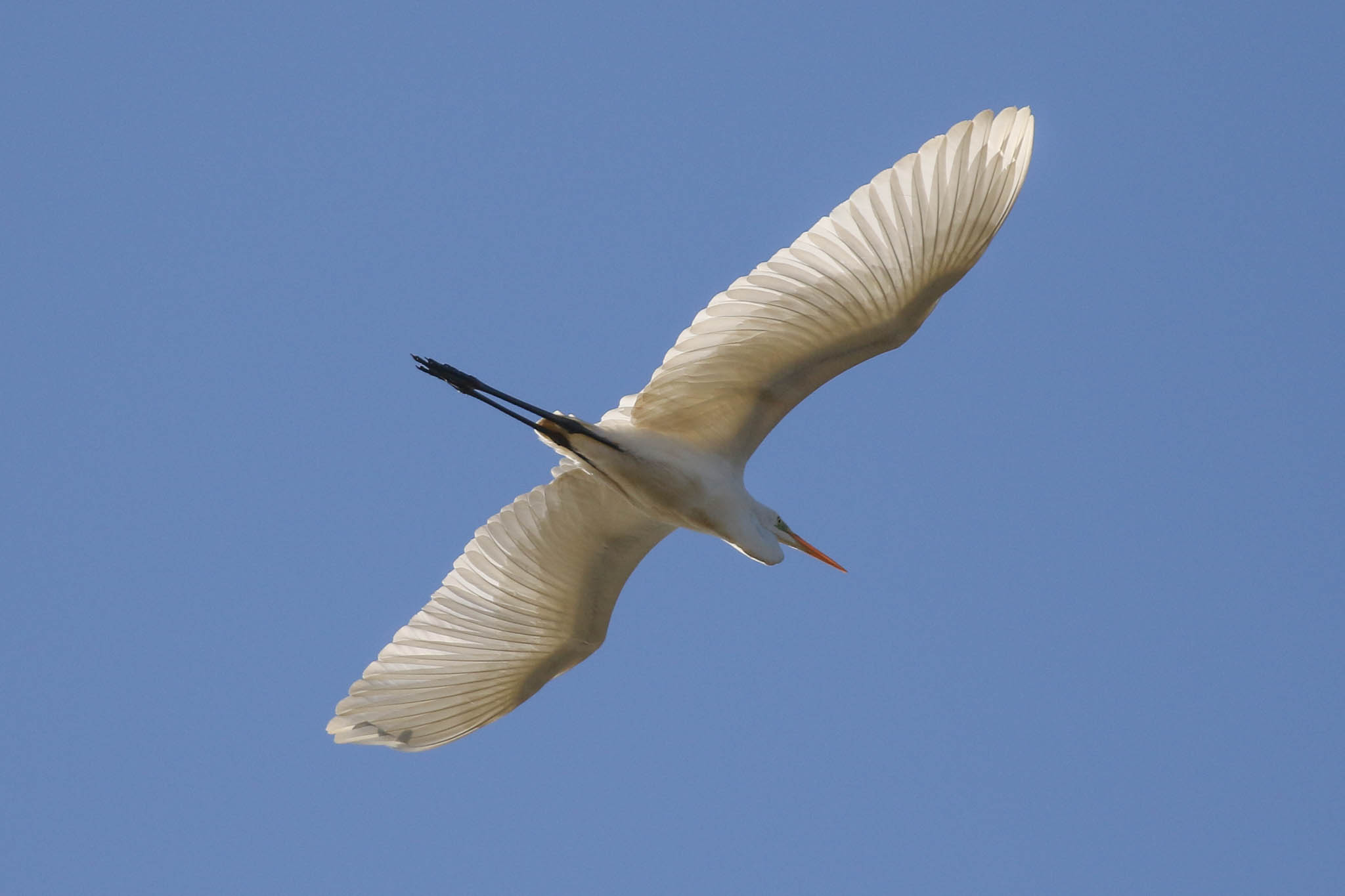
It was nice weather, so we decided to head straight out to the beach. As we passed Volunteer Marsh, we stopped to have a look down the channel at the far end. There were a couple of Little Egrets fishing in the water in the bottoom and several Redshanks and Curlew. A single Grey Plover and a lone Bar-tailed Godwit were right down at the back.
There was not much to see on the Tidal Pools – with the tide out, most of the waders would be out on the beach. But a quick scan revealed a Wheatear out on the big saltmarsh island, our second in two days.
When we got out onto the beach, we could see several people looking up along the high tide line to the west and a quick scan revealed the Snow Buntings feeding further up. There were six of them now – there had apparently been only three earlier – and after picking around for a bit they flew up into the edge of the dunes. We walked up for a closer look.
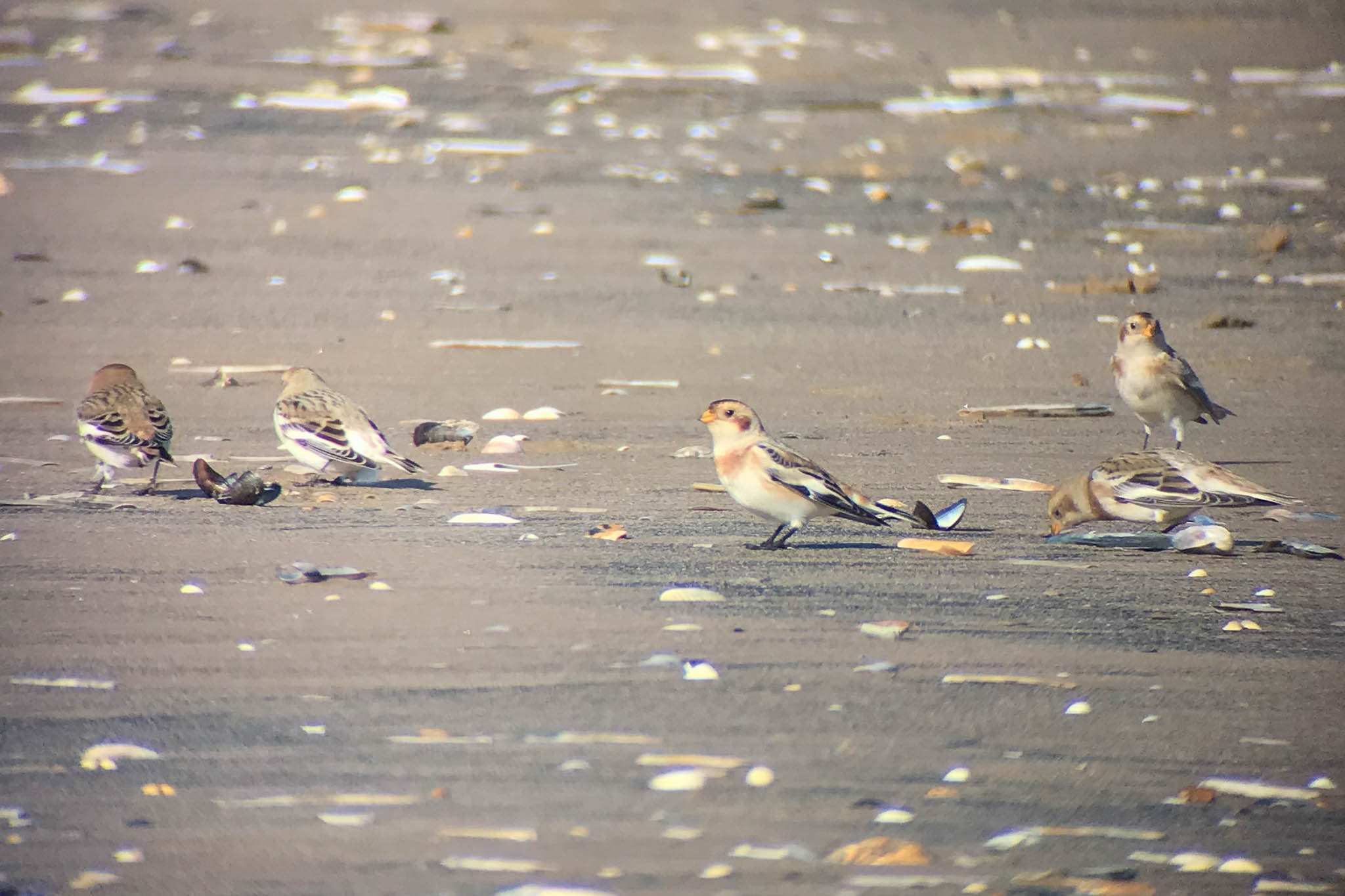
The Snow Buntings were very mobile. They flew back out onto the beach, where we had a great view of them feeding through the scope, then back up to the dunes and back out onto the beach again. Eventually they disappeared off west up the beach towards Thornham Point.
We turned to scan the sea now – we could see one or two Red-throated Divers and a few Great Crested Grebes on the water. We picked up a Red-necked Grebe briefly, but it was way out to sea and it landed before anyone could get onto it and we couldn’t find it again in the choppy water. The Common Scoter were even further out – there were lots of them, but they were little more than dots even through the scopes!
A few waders flew past offshore, but they were probably local birds flushed off the beach – a few Grey Plover flashing their black armpits and a couple of large flocks of Knot. There were several small groups of Brent Geese flying past out to sea – presumably birds coming in from the continent. Three Skylarks came in off the water and up the beach – more fresh arrivals, coming in for the winter.

We walked down the beach, to try to get some closer views of some of the waders and had a nice Bar-tailed Godwit and a Sanderling feeding on the sand just in front of us. There were Grey Plover too, down along the shore, including one still sporting most of its summer black face and belly. Further along, on the mussel beds, we had a good chance to compare Black-tailed Godwit with the Bar-tailed Godwits, always a potential source of confusion.
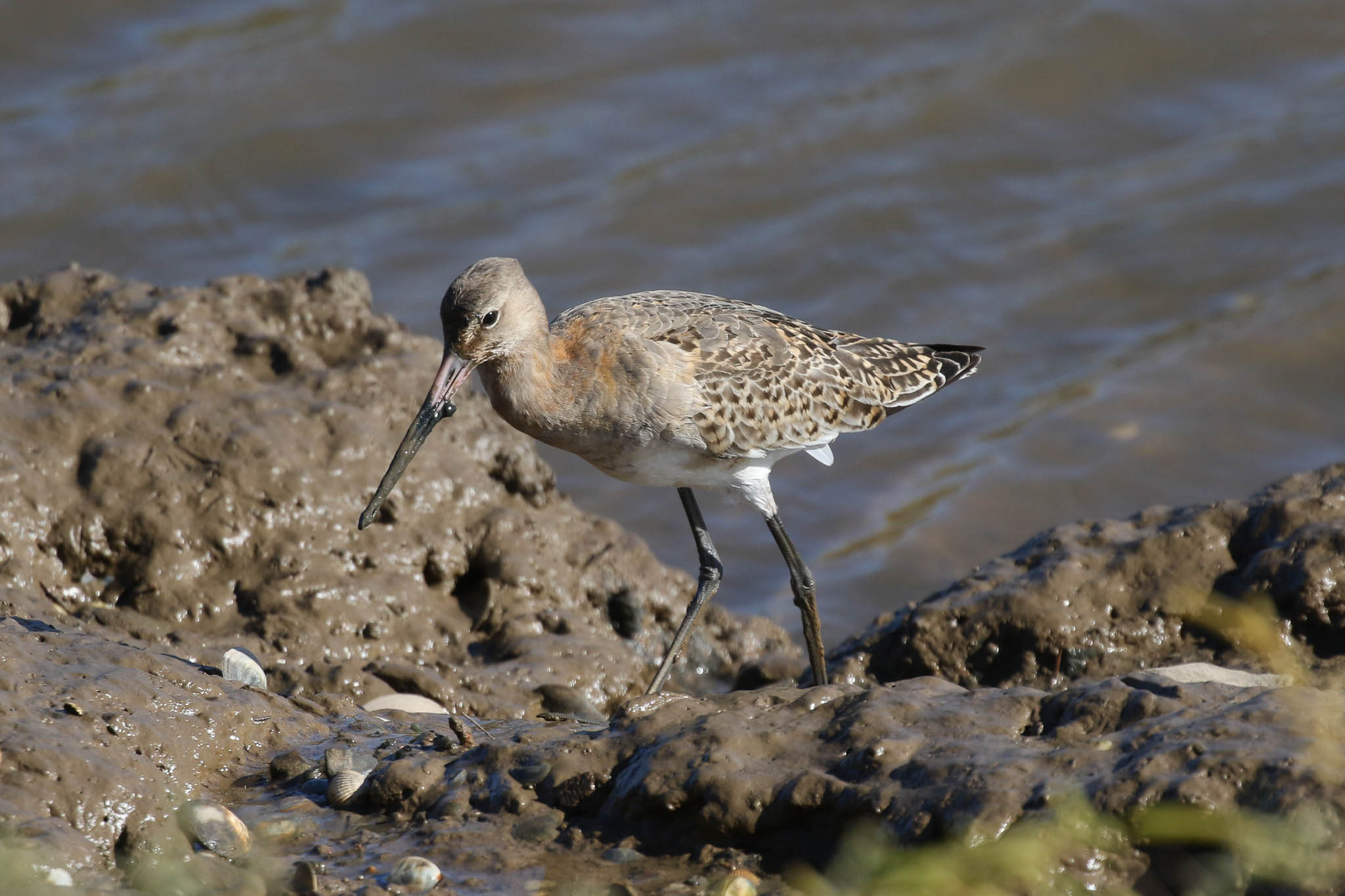
A couple of Red Kites circled over from Scolt Head to Brancaster, and as we started to walk back, one drifted west along the beach and in over the saltmarsh behind us. There were three Ringed Plovers on the Tidal Pools now as we passed, and the Wheatear was still out in the samphire. We stopped to admire a juvenile Black-tailed Godwit (Icelandic, still with some orange around its neck) and a Curlew which were close to the path on Volunteer Marsh.
The Golden Plover were still very unsettled as we passed the Freshmarsh, mostly whirling round in the sky above. There seemed to be more than on the way out, at least 1,000 now, making for quite an impressive display.
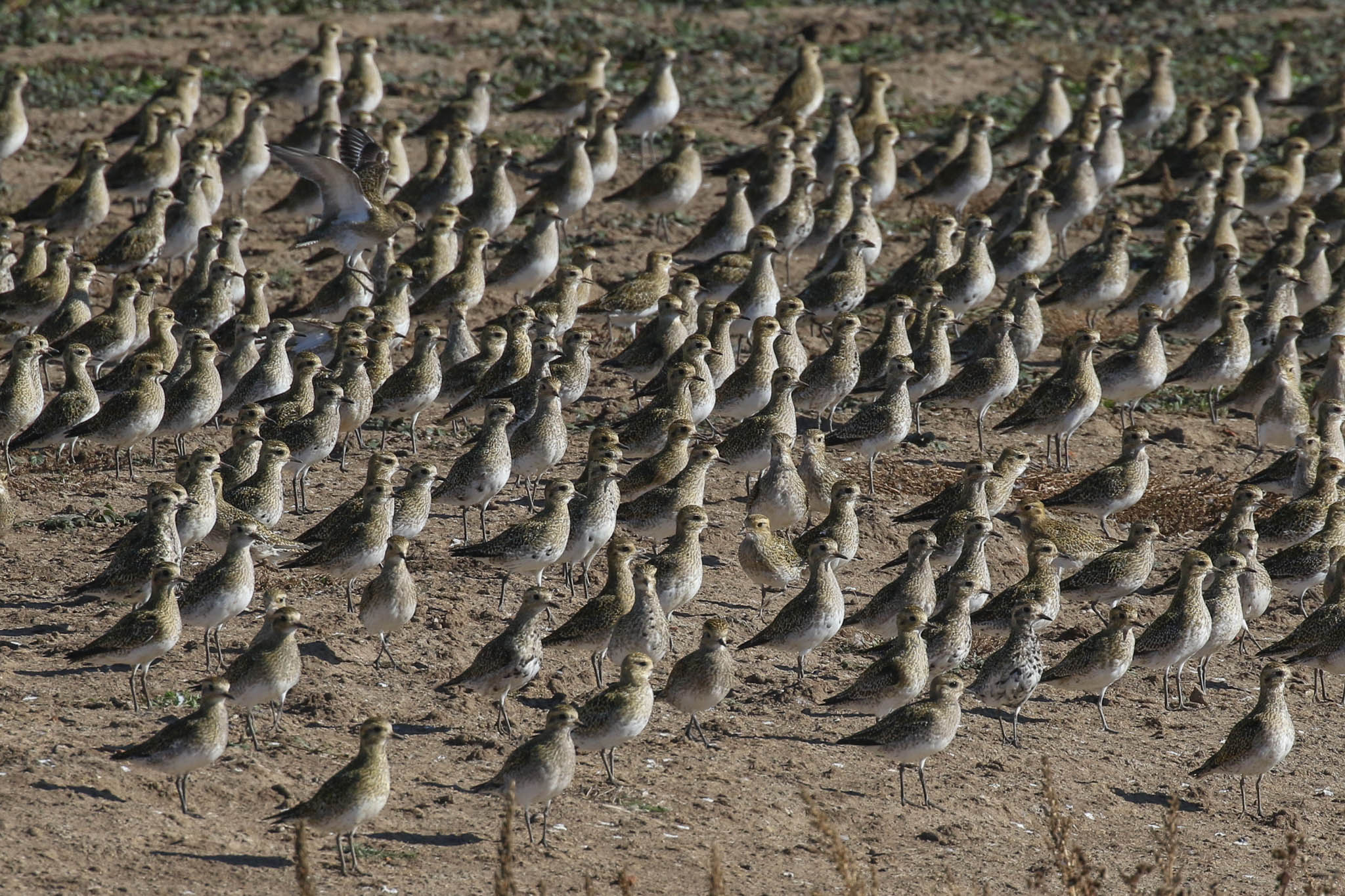
It was lunch time, so we made our way back to the picnic area. As we sat and ate, one or two Siskins flew over calling. After lunch, we headed back out onto Fen Trail and found more Siskins calling in the alders, and one right above our heads in the sallows over the boardwalk. A small group of Chaffinches flew over calling, followed by a Brambling. A hint of what was happening overhead.
We continued on to Patsy’s Reedbed and scanned the water – the ducks included a couple of Common Pochard, a new one for the trip list. A Marsh Harrier flew across over the reedbed beyond and then worked its way along the back edge of the water.
There had apparently been a Bittern seen here a little earlier, but we thought we would need some luck to see it again now. As it turned out, we didn’t even have to wait too long before it flew up out of the reeds and across the back of Patsy’s. It dropped back in to the reeds by the far corner, then a short while later, it came up again – this time we watched it fly off over the reedbed, in the air for some time before it eventually disappeared back down over by Autumn Trail. That was an unexpected bonus!
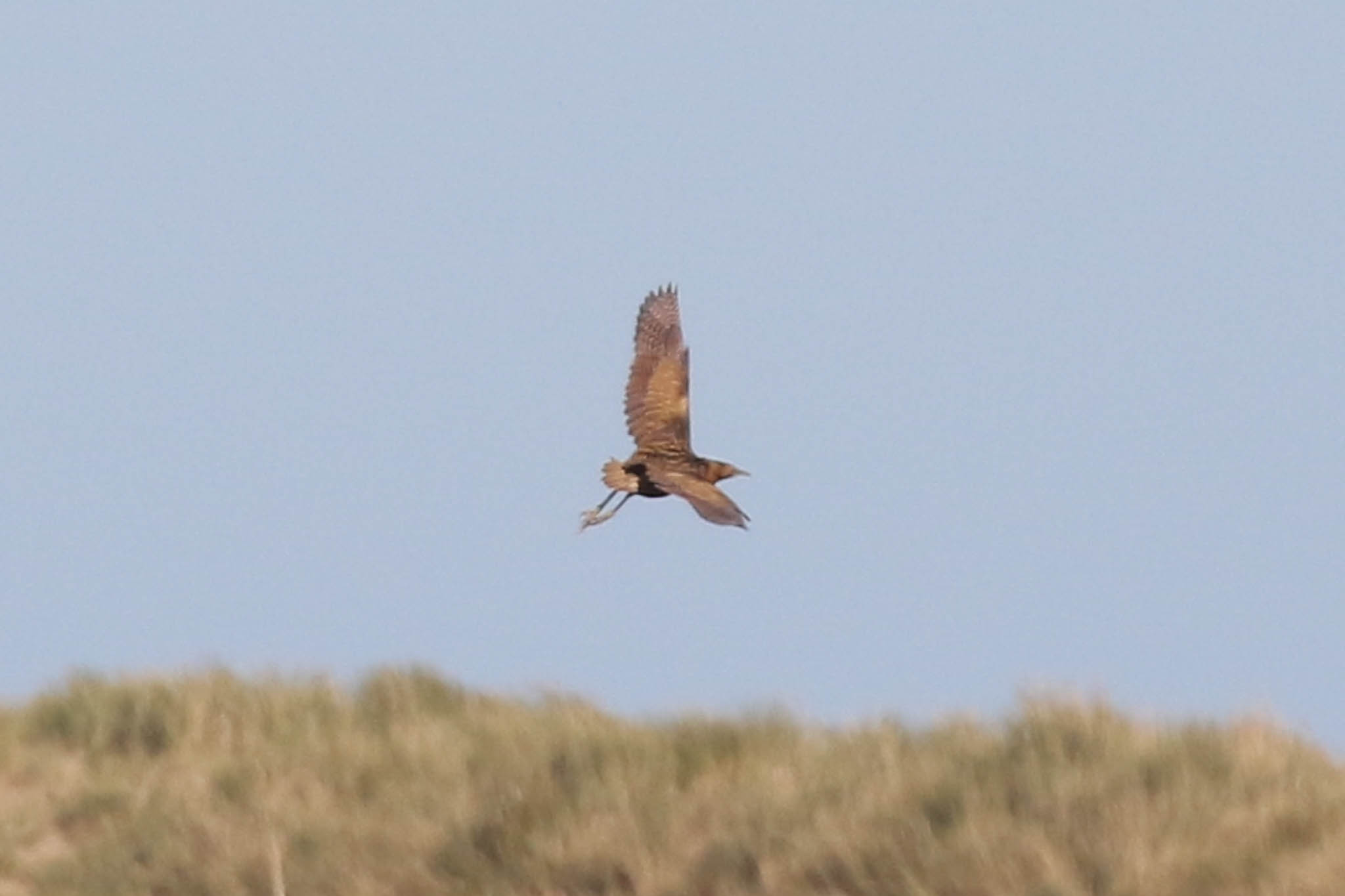
As we sat on the benches by the screen, we noticed a few small flocks of Chaffinches flying west overhead. Walking on down to Willow Wood, there were more. We stopped on the path and scanned and every few seconds another flock flew overhead. They had presumably set off from the continent last night and having hit the coast were now moving west. They were mostly Chaffinches but a couple of decent flocks of Siskins flew past too, as well as one or two singles. Visible migration in action – great to watch.
We heard a Great Spotted Woodpecker calling and looked up to see it in the top of a dead tree in Willow Wood. Through the scope, we could see it was a male – with a narrow band of red on its nape which caught the light as it turned its head.
When everything flushed up off the Freshmarsh, we looked through the swarms of birds to see a young Peregrine in amongst them. It circled over Parrinder Hide, then drifted off west. The Bittern flew again, and we just caught sight of it as it disappeared off towards Brancaster.
From the end of Autumn Trail, there were lots of birds on the back of the Freshmarsh but nothing we hadn’t already seen. A Grey Heron was standing in the near corner and there were more Avocets and Ruff round this side. After a quick scan, we decided to make our way back. The Chaffinches seemed to have slowed a little, though there were still a few small groups moving through.
It was our last day together, and we had promised a prompt finish so people could get away, but we thought we might try one last thing on our way back. There had been one or two Short-eared Owls showing the last few afternoons east of Wells. They hadn’t come out until later yesterday, so we knew we might be too early, but we thought we would try our luck anyway.
We stopped to scan the fields where they have typically been seen first, but we couldn’t see any sign. A male Stonechat was perched down in the tall vegetation on the far edge of the field in front of us. A Sparrowhawk circled up over Wells town and drifted off inland, then first one, followed by what appeared to be a second Sparrowhawk flew past across the field in front of us. How many where there? A Common Buzzard, Red Kite and several Marsh Harriers were out over the saltmarsh beyond.
We decided to have a quick look from North Point, but the car park was rammed with cars. We stopped in the middle and got out for a quick scan. There was no sign of any owls, but we could see lots of people gathered down the track looking at the Jack Snipe. We had enjoyed much closer views the other day, so we didn’t go down to wrestle with the throng. Scanning from the car park, we could just see one bobbing on the edge of the mud. A Yellowhammer flew in and landed in the hedge nearby.
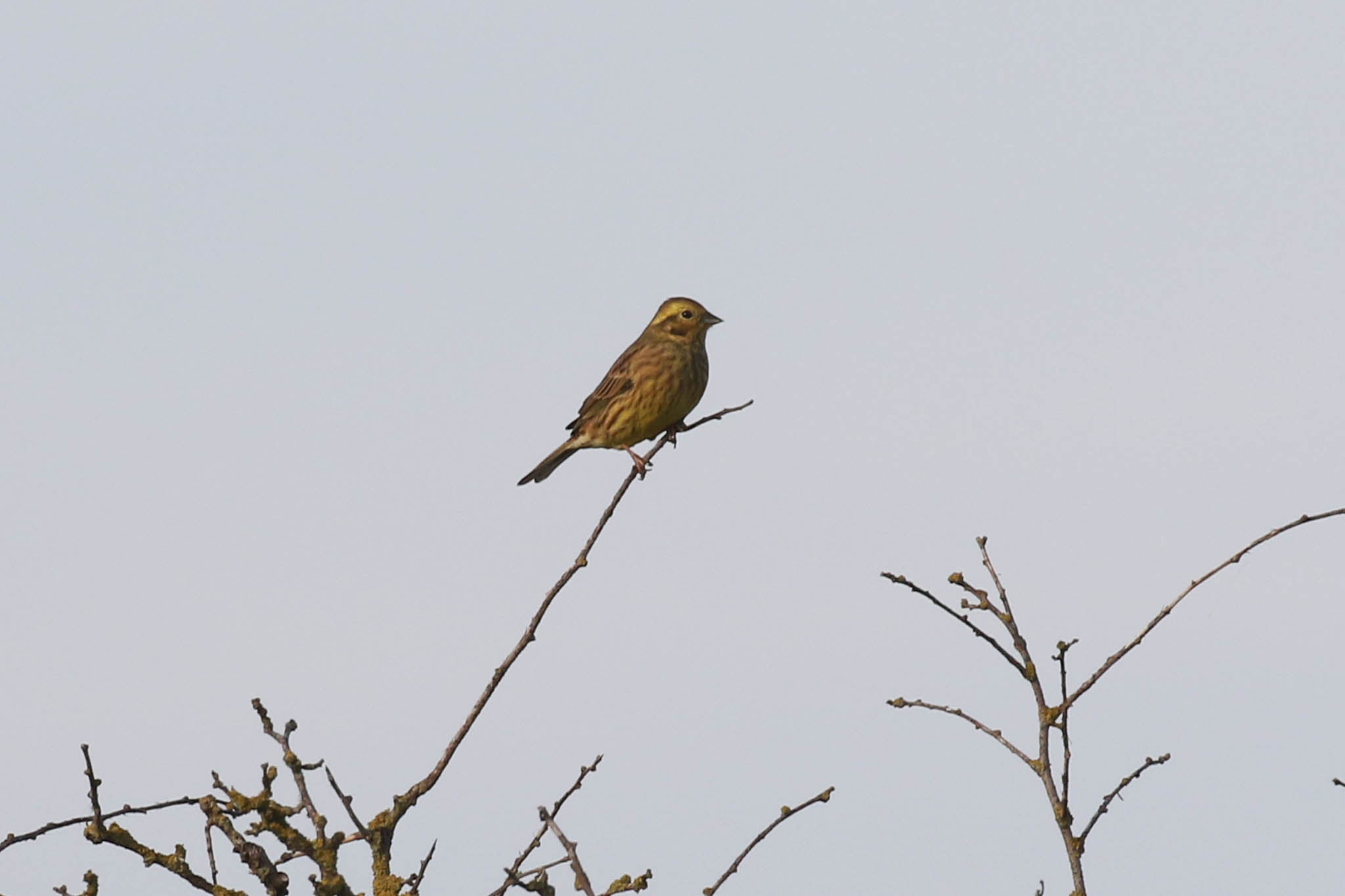
It was on our way back, so we stopped again at the layby. There was still no sign of any owls here either, but we were always going to need a bit of luck to get one out early. There were several Common Snipe out on the pools from here. Another Sparrowhawk flew across and swooped down into the vegetation where the Stonechats had been.
Unfortunately, we had to get back so it was time to call it a day and head for home.
















